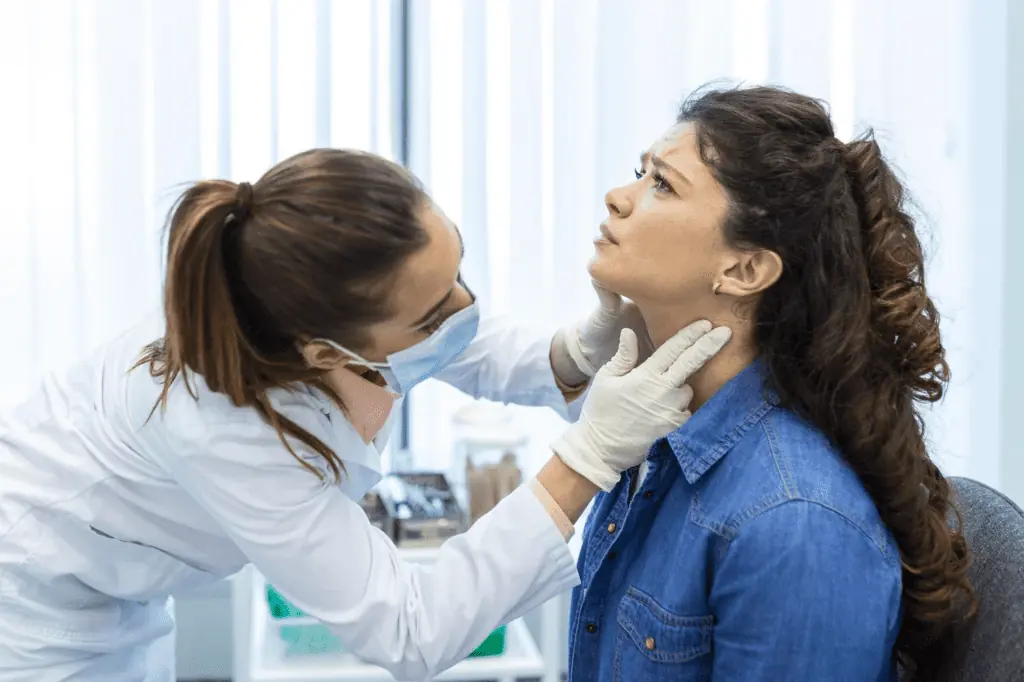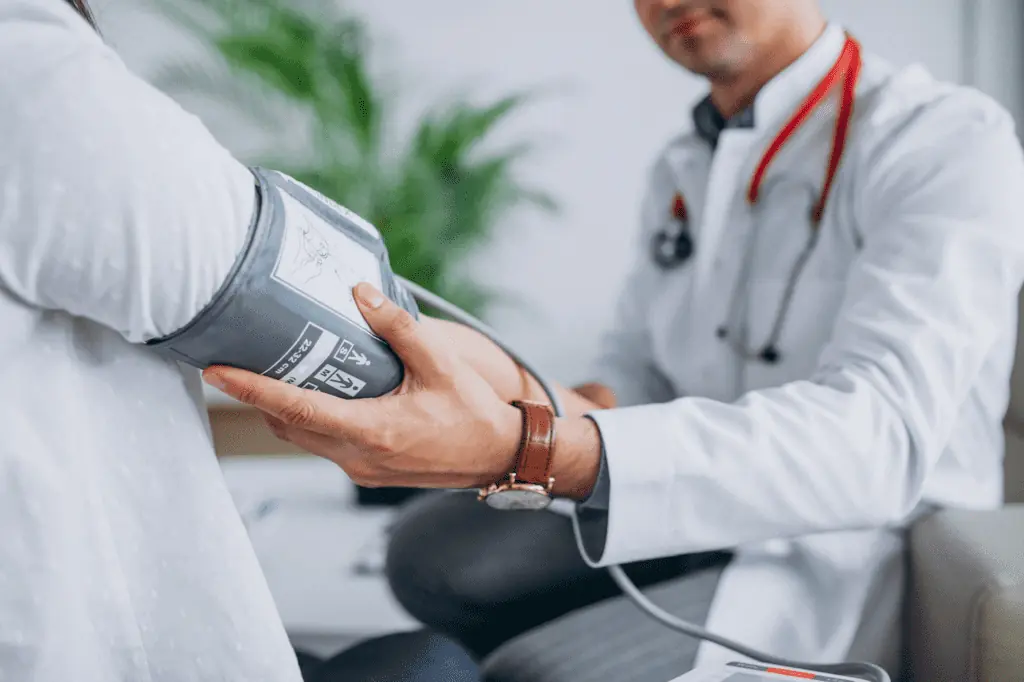Confused about the difference between hyperthyroidism and hypothyroidism? It’s not just you. The words that seem similar to one another are frequently confused, but they have opposite meanings.
More than 12% of Americans will have a thyroid issue at some time in their life. However, thyroid illness frequently remains undiagnosed—up to 60% of people are unaware they have it, which highlights the significance of routine monitoring. Both illnesses are serious and require medical attention from your doctor.
What are the Two Main Types of Thyroid Disease?
The thyroid gland is responsible for producing hormones that play a significant role in nearly every cell in your body. Thyroid hormones aid with the digestion of food as well as regulate your heart rate, blood pressure, and body temperature.
Hyperthyroidism is when you have an overactive thyroid, or when it generates excessive amounts of thyroid hormone. Hypothyroidism, on the other hand, is when the thyroid is underactive, so it does not produce enough hormones the body needs.
The symptoms of these two illnesses usually differ. However, the signs and symptoms can sometimes overlap. Both hyperthyroidism and hypothyroidism have different causes and treatments.
Hypothyroidism is more prevalent than hyperthyroidism in the United States. However, having an overactive thyroid followed by an underactive thyroid or vice versa is not unusual.
Hyperthyroidism Causes and Symptoms
The three most common causes of hyperthyroidism are thyroiditis, or thyroid inflammation; a thyroid nodule that overproduces the hormone thyroxine (T4); and Graves’ disease, an autoimmune disease.
Your body’s functions speed up when you have an overactive thyroid. This may initially offer you more energy. However, it doesn’t last long. You’ll soon tire out since your body isn’t designed to keep up with this rapid speed. Other signs and symptoms of hyperthyroidism include:
- Fatigue
- Feeling extra warm
- Increased sweating
- Fast heartbeat
- Hand tremor
- Weight loss or gain
- Diarrhea
- Hair loss
- Anxiety and nervousness
- Insomnia
- Bulging eyes
- Muscle weakness
- Light and short periods
Do not put off being tested for hyperthyroidism if you are experiencing its symptoms. Your health might be suffering without your knowledge.
Even if you haven’t yet seen any symptoms but have been given a hyperthyroidism diagnosis, you should still adhere to your doctor’s treatment recommendations. Before choosing one course of treatment, weigh all the advantages and disadvantages. The sooner you start treatment for your overactive thyroid, the less long-term damage the disease can do.
Hypothyroidism Causes and Symptoms
The most common reason for having hypothyroidism is Hashimoto’s thyroiditis. This autoimmune disorder makes your body target your immune system. As a result, the thyroid eventually stops releasing hormones, which results in hypothyroidism.
Another cause of hypothyroidism is low iodine. However, because table salt is now fortified with iodine, this has mostly been eliminated in the United States. But recently, the prevalence of hypothyroidism caused by iodine deficiency has increased as a result of the popularity of “natural” sea salts.
When you have an underactive thyroid, your body’s functions slow down, which results in a variety of symptoms like feeling drained and lethargic. The symptoms depend on the severity of your illness. Usually, serious health problems can take years to develop.
The signs of hypothyroidism, such as weariness and weight gain, may first go unnoticed. You could also believe that they are a natural aspect of aging. However, as your metabolism continues to decrease, you might experience more obvious issues. The symptoms of hypothyroidism are:
- Fatigue
- Feeling extra cold
- Decrease in sweating
- Slow heart rate
- Constipation
- Weight gain
- Muscle or joint pain
- Hair loss
- Irritability and depression
- Insomnia
- Puffy face
- Heavy and irregular periods
Consult your doctor if you feel fatigued all the time, or if you have other hypothyroidism symptoms. Without proper treatment, an underactive thyroid can result in major issues with both physical and mental health.
Even babies can develop hypothyroidism. The majority of newborns with a thyroid gland that is absent or that isn’t functioning properly don’t exhibit symptoms immediately. However, if hypothyroidism is left undiagnosed and untreated, symptoms start to show up. Infants may start to show:
- Poor growth
- Poor weight
- Feeding problems
- Constipation
- Poor muscle tone
- Jaundice, a condition that results in the yellowing of the skin and the whites of the eyes
- Enlarged tongue
- Hoarse crying
Even minor cases of hypothyroidism can impair a child’s ability to develop physically and mentally if left untreated.
What are the Complications of Hyperthyroidism and Hypothyroidism?
Your thyroid plays a crucial role in your body by producing and managing thyroid hormones that regulate metabolism. Your body converts the food you eat into energy through a process called metabolism. Then, your entire body uses this energy to maintain many of its systems functioning properly.
However, if there’s an imbalance of hormones, your body’s health is put at risk. If left untreated, hyperthyroidism can lead to major health issues, including:
- Heart failure
- Stroke
- Thinning bones
- Osteoporosis
- Muscle problems
- Menstrual problems
- Fertility issues
Untreated hypothyroidism can result in several additional health issues, such as:
- Heart problems
- Goiter
- Trouble breathing
- Peripheral neuropathy
- Birth defects
- Infertility
Who can be Affected by Thyroid Disease?
Anyone can get thyroid illness, including men, women, children, teens, and the elderly. It might develop as you get older or it can be present at birth (usually hypothyroidism). Thyroid problems are very common. But a woman is five to eight times more likely to get a thyroid disease diagnosis than a man.
You may be more likely to get a thyroid problem if you are one of the following:
- Have a family history of thyroid problems
- Take an iodine-rich medicine
- Ages 60 and up, especially women
- Have medical ailments like anemia, diabetes and lupus
- Had a previous treatment for any thyroid disease
What is the Prognosis of Thyroid Disease?
The prognosis between hyperthyroidism and hypothyroidism varies. With hypothyroidism, treatment may help with overall symptoms, but it’s a disease you’ll probably need to manage for the rest of your life. However, because every case is unique, you should discuss your condition with your doctor to know what to expect.
When it comes to hyperthyroidism, it is not permanent. Your thyroid hormone levels will return to normal if the antithyroid drugs are effective. Thus, having normal thyroid functions.
However, if hyperthyroidism recurs after you stop taking medicine or if the treatment causes negative effects, your doctor may advise thyroid removal. It is more likely that surgery plus radioactive iodine will end hyperthyroidism. Although when you follow these therapies, there’s a chance that you get hypothyroidism, for which you’ll need daily medicine.
How is Thyroid Disease Diagnosed?
Diagnosing hyperthyroidism and hypothyroidism can be challenging because the symptoms of these illnesses0 are sometimes mistaken for those of other disorders. Another reason is when you age or are pregnant, you could have symptoms that are comparable to those you would have if you have thyroid illness.
Fortunately, several tests can assist in determining whether the origin of your symptoms is a thyroid problem. These tests are:
- Blood test
Blood testing is one of the most reliable techniques to identify a thyroid issue. By detecting the level of thyroid hormones in your blood, thyroid blood tests are used to determine if your thyroid gland is working normally.
Blood is drawn for these tests from a vein in your arm. The result of this test will show if you have an overactive or an underactive thyroid. Other specific blood tests can also be done to check if you have thyroid disorders such as:
- Thyroiditis
- Graves’ Disease
- Goiter
- Hashimoto’s Disease
- Thyroid nodule
- Thyroid cancer
- Imaging tests
In many instances, examining the thyroid may provide a wealth of information. Your doctor may do a thyroid scan, which is an imaging test. This enables your medical professional to examine your thyroid and search for any changes in size, shape, or abnormal growths (nodules).
Your healthcare provider may also do an ultrasound. It usually takes about half an hour. There’s typically no preparation before the ultrasound. You don’t need to fast or change your diet.
- Physical exam
A physical examination conducted by your doctor is another easy approach to checking your thyroid. Your provider will feel your neck for any lumps or thyroid enlargements as part of this quick and painless examination.
Takeaways
Finding a trustworthy thyroid care professional who will work with you in assessing your treatment options is the first step in managing your thyroid illness. You’ll be prepared to recognize and address the inevitable symptoms of thyroid disease if you are proactive and open to your physician.
While there are specific approaches that can help you with some of the symptoms, having a healthy diet and practicing good sleep hygiene will greatly help with your overall health. Additionally, managing stress will limit the production of stress hormones that negatively affect your thyroid.



